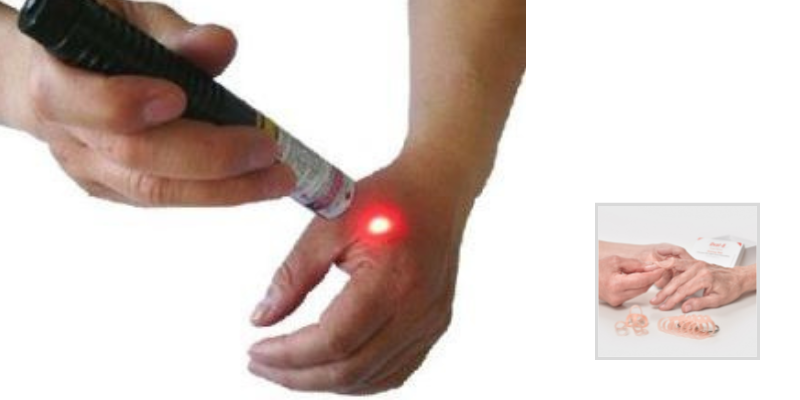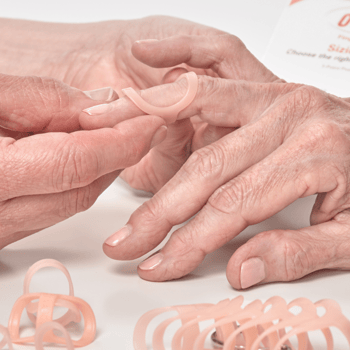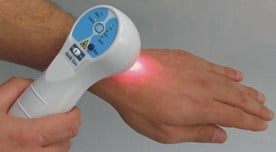In the last blog,the purpose of low level laser as decreasing pain or inflammation, promoting healing of wounds, tissues, and nerves, and preventing tissue damage was discussed. In hand therapy, physical and occupational therapists use evidence-based treatments to assist with addressing symptoms that impact functional use of the hands and upper extremities. Based on this, low level laser therapy may be an appropriate modality for the hand therapy clinic particularly when an injury or diagnosis involves inflammation and pain. Let’s take look at the types of diagnoses that low level laser therapy may be helpful for and the available evidence on its use in hand therapy.
Trigger Finger
Trigger finger involves inflammation and thickening of the flexor tendon in the finger just distal to the A1 pulley area often causing locking and pain. A small clinical trial applied 3 treatment of low level laser light to 5 women with trigger finger with symptoms of locking at the involved digit. Two of the 5 were asymptomatic following the treatment, 2 reported improvement in symptoms, and 1 was not improved. This trial however has a very small sample size, has no significance calculations, and has no control group and therefore is not high level or quality evidence.
Osteoarthritis in the Fingers
Hand osteoarthritis (OA) is a common diagnosis often causing pain and inflammation in the fingers and limiting functional use of the hands. A study examined the impact of low level laser therapy on the symptoms of 34 individuals suffering with OA in their hands. There was not a control group in the study, but there was found to be a significant improvement in pain, inflammation and range of motion for the participants after 5-10 treatments and these improvements persisted for 8 weeks. Further studies would be useful on this topic and intervention.
Carpal Tunnel Syndrome
Carpal tunnel syndrome is compression on the median nerve at the level of the proximal palm causing numbness, tingling, pain and decreased use of the hands. Low level laser therapy for carpal tunnel syndrome has been assessed in several randomized controlled trials. One trial in particular evaluated use of an orthosis versus use of an orthosis and 10 laser treatments for 45 individuals with carpal tunnel syndrome. The treatment group with both the orthosis and the low level laser therapy was found to have better outcomes on follow up nerve conduction studies than the individuals who were in the orthosis only treatment group. There was no difference between groups related to function at the follow-up.
Lateral Epicondylitis
Lateral epicondylitis causes pain, decreased grip strength, and decreased function related to tissue degeneration at the origin of one of the wrist extensor muscles. In a prospective, randomized controlled trial, 39 individuals with lateral epicondylitis were randomized either to 9 low level laser treatments or the placebo. The experimental group had significantly greater improvement in pain, grip strength, and function.
While low level laser treatment for the conditions noted above is still investigational, orthoses such as Oval-8 Finger Splints for trigger finger and finger OA may be appropriate for therapists employing low level lasers as a treatment modality.
Blog References: For more information on this topic, click to see the references for this blog post.





